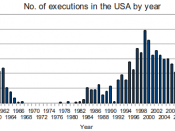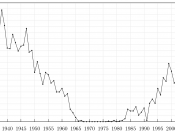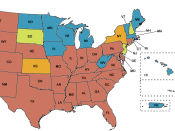Capital Punishment
The death penalty dates back to colonial times, where American colonies inherited this system of law from the British. When European settlers came to the new world, they brought the practice of capital punishment with them. Of course each of the colonies had it's own criminal code. In early Puritan Massachusetts, the list of capital crimes included witchcraft and adultery. While in Pennsylvania limited the death penalty to crimes of treason and murder. In other colonies one could be given the death penalty for minor offenses such as stealing grapes, killing chickens, and trading with Indians. In a New York colony offenses such as striking one's mother of father, or denying the "true God" were punishable by death.
In the Tenth Century A.D., hanging became the usual method of execution in Britain. The number of capital crimes in Britain continued to rise throughout the next two centuries. By the 1700's, 222 crimes were punishable by death in Britain, including stealing, cutting down a tree, and robbing a rabbit warren.
The American colonies followed some of what the British did. The American colonies added some to their form of the death penalty by making the hangings public. The one being hung would have a few things to say about how he or she was sorry of committing punishable by death. Those that weren't hung were spies, traitors and deserters who would face a firing squad. Then in 1888 New York built the first electric chair, it was believed the newly harnessed power of electricity would prove a more scientific and humane means of execution. The first execution by means of the electric chair took place in New York in which William Kemmler was put to death. Soon, many other states began to adopt this execution method.
In 1924, the...



Very Good
This essay has a very good structure and is easy to understand. I definetely enjoyed reading it. It would be better if there was a bibliography.
0 out of 0 people found this comment useful.